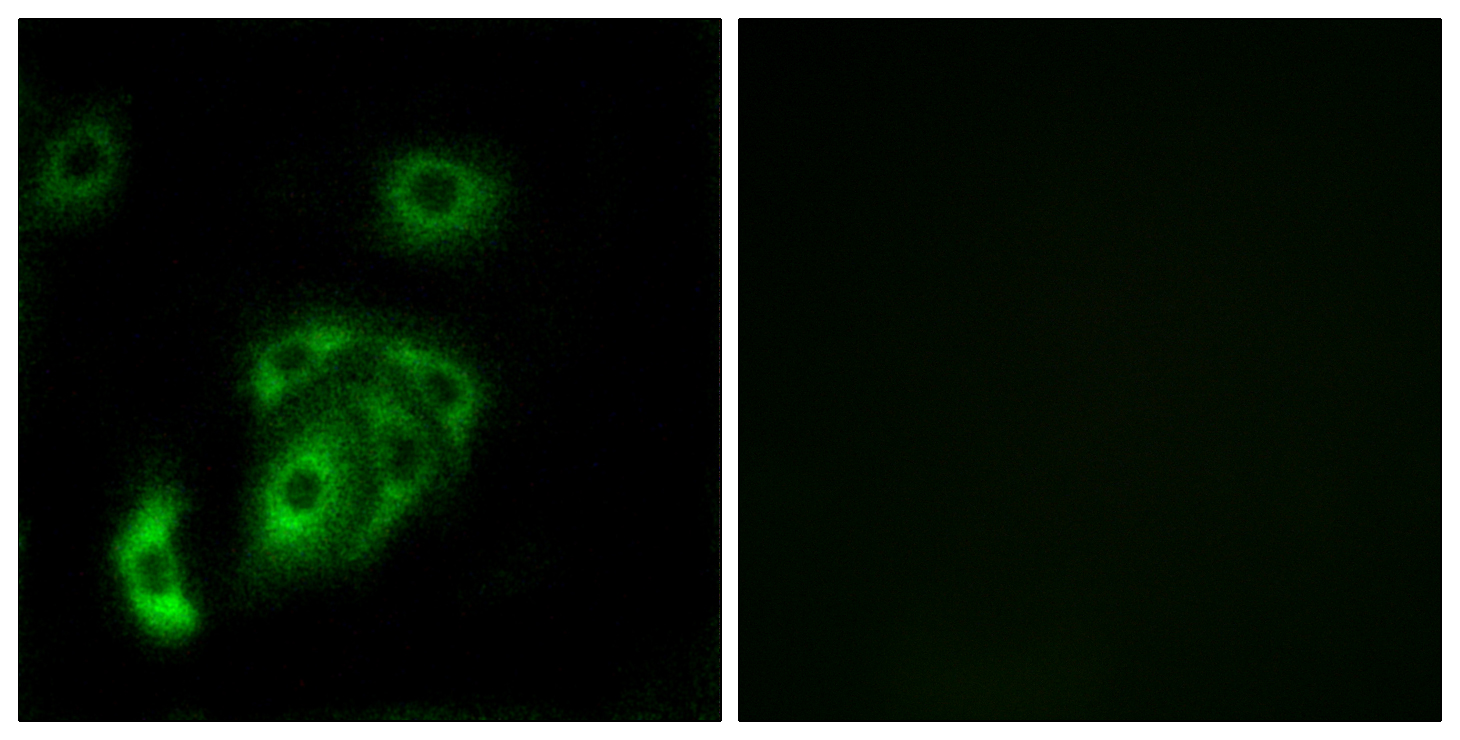Contactin 5 Polyclonal Antibody
- Catalog No.:YT1055
- Applications:IF;IHC;ELISA
- Reactivity:Human;Rat;Mouse;
- Target:
- Contactin 5
- Gene Name:
- CNTN5
- Protein Name:
- Contactin-5
- Human Gene Id:
- 53942
- Human Swiss Prot No:
- O94779
- Mouse Swiss Prot No:
- P68500
- Immunogen:
- The antiserum was produced against synthesized peptide derived from human CNTN5. AA range:891-940
- Specificity:
- Contactin 5 Polyclonal Antibody detects endogenous levels of Contactin 5 protein.
- Formulation:
- Liquid in PBS containing 50% glycerol, 0.5% BSA and 0.02% sodium azide.
- Source:
- Polyclonal, Rabbit,IgG
- Dilution:
- IF 1:200 - 1:1000. ELISA: 1:20000. Not yet tested in other applications.
- Purification:
- The antibody was affinity-purified from rabbit antiserum by affinity-chromatography using epitope-specific immunogen.
- Concentration:
- 1 mg/ml
- Storage Stability:
- -15°C to -25°C/1 year(Do not lower than -25°C)
- Other Name:
- CNTN5;Contactin-5;Neural recognition molecule NB-2;hNB-2
- Molecular Weight(Da):
- 121kD
- Background:
- The protein encoded by this gene is a member of the immunoglobulin superfamily, and contactin family, which mediate cell surface interactions during nervous system development. This protein is a glycosylphosphatidylinositol (GPI)-anchored neuronal membrane protein that functions as a cell adhesion molecule. It may play a role in the formation of axon connections in the developing nervous system. Alternatively spliced transcript variants encoding different isoforms have been described for this gene. [provided by RefSeq, Aug 2011],
- Function:
- function:Contactins mediate cell surface interactions during nervous system development. Has some neurite outgrowth-promoting activity in the cerebral cortical neurons but not in hippocampal neurons. Probably involved in neuronal activity in the auditory system.,similarity:Belongs to the immunoglobulin superfamily. Contactin family.,similarity:Contains 4 fibronectin type-III domains.,similarity:Contains 6 Ig-like C2-type (immunoglobulin-like) domains.,tissue specificity:Expressed in brain and kidney and at very low level in placenta. Not expressed in other tissues. In brain, it is highly expressed in the occipital lobe, amygdala, cerebral cortex, frontal lobe, thalamus and temporal lobe. Expressed at moderate level in the cerebellum, substantia nigra, putamen, medulla and hippocampus. Weakly expressed in the spinal cord and caudate nucleus. Weakly or not expressed in the corpus callosum.
- Subcellular Location:
- Cell membrane ; Lipid-anchor, GPI-anchor .
- Expression:
- Expressed in brain and kidney and at very low level in placenta. Not expressed in other tissues. In brain, it is highly expressed in the occipital lobe, amygdala, cerebral cortex, frontal lobe, thalamus and temporal lobe. Expressed at moderate level in the cerebellum, substantia nigra, putamen, medulla and hippocampus. Weakly expressed in the spinal cord and caudate nucleus. Weakly or not expressed in the corpus callosum.
- June 19-2018
- WESTERN IMMUNOBLOTTING PROTOCOL
- June 19-2018
- IMMUNOHISTOCHEMISTRY-PARAFFIN PROTOCOL
- June 19-2018
- IMMUNOFLUORESCENCE PROTOCOL
- September 08-2020
- FLOW-CYTOMEYRT-PROTOCOL
- May 20-2022
- Cell-Based ELISA│解您多样本WB检测之困扰
- July 13-2018
- CELL-BASED-ELISA-PROTOCOL-FOR-ACETYL-PROTEIN
- July 13-2018
- CELL-BASED-ELISA-PROTOCOL-FOR-PHOSPHO-PROTEIN
- July 13-2018
- Antibody-FAQs
- Products Images

- Immunofluorescence analysis of A549 cells, using CNTN5 Antibody. The picture on the right is blocked with the synthesized peptide.

- Immunohistochemical analysis of paraffin-embedded human tonsil. 1, Antibody was diluted at 1:200(4° overnight). 2, Tris-EDTA,pH9.0 was used for antigen retrieval. 3,Secondary antibody was diluted at 1:200(room temperature, 45min).



